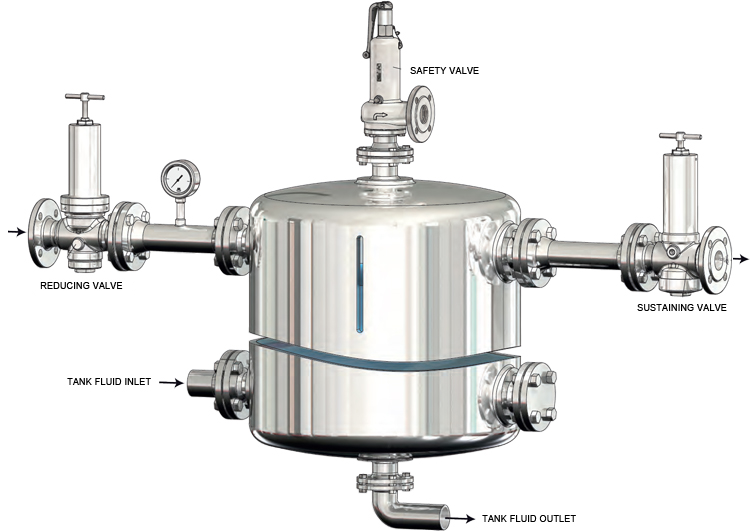Tank Blanketing
Tank Blanketing (also known as Gas Blanketing or Tank Padding) is the process of applying a gas to the empty space above a product in a storage container. We offer a proven and reliable tank blanketing (gas blanketing, tank padding) solution that is preferred by many leading breweries and pharmaceutical industries.
They have a variety of applications including:
(a) Food and beverages industry: Benefits include a longer life of the product, reduced hazards.
(b) Combustible products: To increase safety. Since fuels require oxygen to combust, reduced oxygen content in the vapor space lowers the risk of unwanted combustion.
(c) Keep contaminants out of a storage space: This is accomplished by creating positive pressure inside the container. This positive pressure ensures that if a leak should occur, the gas will leak out rather than having the contaminants infiltrate the container. Some examples include its use on purified water to keep unwanted minerals out and its use on food products to keep contaminants out.
(d) Safety: During the filling or emptying of the tank, heating or cooling of the tank content, unless the pressures are managed correctly the tank is at risk of implosion or explosion. The most commonly used gas in blanketing is Nitrogen. Nitrogen is widely used due to its inert properties, as well as its availability and relatively low cost. Other gases are used based on their compatibility with the fluid in the tank. The pressure reducing valve reduces the pressure of the blanketing medium (air, nitrogen, CO2 etc.) to the desired pressure when emptying the vessel, and a sustaining valve discharges the gaseous medium when filling the vessel. The reference setting on the sustaining valve is set slightly higher than that of the reducing valve otherwise the gas coming in through the reducing valve will immediately flow out through the sustaining valve. The flow capacities of the valves is determined by the rate at which the vessel can be emptied and filled. Vessel pressures can be selected appropriate to the setting ranges of the reducing and sustaining valves, from a minimum of 10 mBar's to a maximum of 80 Bar's. External impulse lines can be used if the design requires.
Typical Example In a Brewery CO2 is commonly used as the blanketing medium. The reducing valve is set at 3.5 Barg and the sustaining valve at 3.8 Barg. 1. On startup the tank is completely empty and is pre-charged with CO2 to 3.5 Barg by the reducing valve. 2. As the tank is filled with beer, the CO2 compresses and when the pressure reaches 3.8 Barg, it is vented out of the tank through the sustaining valve. The CO2 is often reused and not vented to the atmosphere. 3. When the tank is emptied of beer, the CO2 pressure reduces and consequntly the reducing valve lets in more CO2. 4. The valve sizes are determined by the rate at which the tank can be filled and emptied and not by the size of the tank. For further help or information about these products please contact us on +44 (0)1482 601030 or email sales@flowstar.co.uk.
